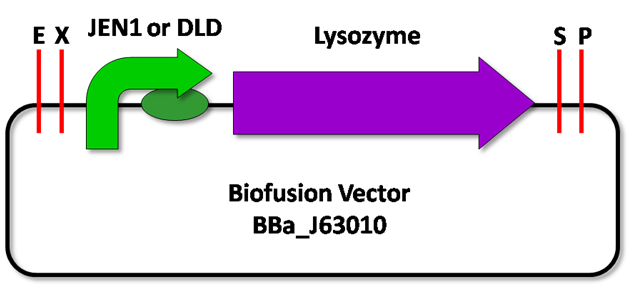Team:UNICAMP-Brazil/Yeastguard/Killing
From 2009.igem.org
(→Caracterization of the Biobrick) |
|||
| Line 15: | Line 15: | ||
<p style=”text-align:justify;”>The lysozyme biobrick described above is going to be assembled according to the [https://2009.igem.org/Team:UNICAMP-Brazil/Protocols/pGEMStrategy pGEM cloning strategy] proposed by the team. And in order to caracterize the biobrick, its functionality must be seen in yeasts. Thus, the part is going to be transferred to an [https://2009.igem.org/Team:UNICAMP-Brazil/Protocols/YEP yeast expression vector] (YEp358 ura+) and then be transformed into the ''Saccharomyces cerevisiae'' YF23 ura- strain.</p> | <p style=”text-align:justify;”>The lysozyme biobrick described above is going to be assembled according to the [https://2009.igem.org/Team:UNICAMP-Brazil/Protocols/pGEMStrategy pGEM cloning strategy] proposed by the team. And in order to caracterize the biobrick, its functionality must be seen in yeasts. Thus, the part is going to be transferred to an [https://2009.igem.org/Team:UNICAMP-Brazil/Protocols/YEP yeast expression vector] (YEp358 ura+) and then be transformed into the ''Saccharomyces cerevisiae'' YF23 ura- strain.</p> | ||
| - | <p style=”text-align:justify;”>The experiments will consists of lysozyme being regulated by a constitutive promoter ADH1(BBa_J63005), and by the two promoters designed for the recognition mechanism: JEN1 and DLD.</p> | + | <p style=”text-align:justify;”>The experiments will consists of lysozyme being regulated by a constitutive promoter ADH1(BBa_J63005), and by the two promoters designed for the recognition mechanism: JEN1 and DLD (Figure 2).</p> |
{{:Team:UNICAMP-Brazil/inc_rodape}} | {{:Team:UNICAMP-Brazil/inc_rodape}} | ||
Revision as of 21:51, 21 October 2009
| ||||||||||||||||||||||||||||||||||
 "
"















